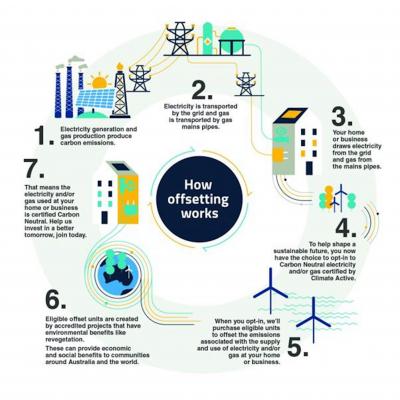The call for net zero emissions is on everybody’s mind at the moment with the UN Climate Change Conference happening this week in Glasgow. There is a lot of talk about emission targets and time frames, but what does it mean for us and what can we as individuals do to do our bit?
Almost everything we do creates emissions, either directly by burning fossil fuels, by using products that have been made from fossil resources or even by using and digesting all-organic materials.
Not all these emissions are the carbon dioxide (CO2) that everyone talks about, but to make these other emissions measurable we calculate the equivalent amount of CO2 that would have the same effect. Methane emissions, for example, are created by leakage from natural gas production, landfill and the digestive processes of cattle. Methane is 84 times more active than CO2 in the first 10 years in the atmosphere before it starts to break down and, over a 100-year period, it is still 25 times more active.
So naturally it was one of the first emissions that reduction efforts have targeted. There are a number of relatively easy ways to reduce the effect of methane emissions. Landfill gas can be captured and then either be simply flared off or used to generate electricity in a generator. Just the burning of methane reduces its climate effect by roughly 90 per cent. Many cattle are now by-fed with seaweed products to reduce their gaseous emissions significantly.
As consumers, most of our direct emissions come from electricity and transport. On average, 1KWh of electricity from a black coal-fired power station creates 1.01kg of CO2 and even the cleanest of our so called clean coal power stations still emits 0.891kg CO2 per KWh. At an average 600KWhs of electricity consumption per household, we emit almost 600kg of CO2 gas per month. Reducing these emissions can be straight forward for many of us and it can save a lot of money in the long run, too. Installing a 5KWsolar system can generate up to 650 KWh per month and in most cases it can pay for itself in less than four years, often even less.
Many of us, however, can’t just install solar for various reasons. Not every roof and location is suitable for solar panels and, if you are renting, it comes down to the landlord’s decision and investment in solar.
The easiest way to get your household to net zero emissions in this situation is to reduce your electricity consumption as much as possible through energy efficient appliances and carbon offsetting through green power. Almost all electricity providers offer green power by now for a small additional fee/KWh. The provider measures your electricity consumption and they then buy the same amount in carbon credits either from large renewable energy providers or from government-accredited carbon offset schemes.
In addition, there are also carbon offset schemes available to offset the emissions from your car and even from airline travel.
Another, cost-free alternative is to move your electricity consumption into the daylight hours between 9am and 4pm with the timers on washing machines, dishwashers and air conditioners.
On sunny days, an ever-increasing percentage of our electricity comes from solar exports to the grid and the more we use during the day, the more of this emission-free energy can be utilised.
In short, the three steps to zero net emissions are:
• Reducing your emissions onsite through energy efficiency or by installing solar PV to replace grid energy.
• Building or purchasing renewables offsite via green energy contracts or private development.
• Offsetting the rest of your emissions through the purchase of carbon offsets.
You can find out more on our website zeroemissionsnoosa.com.au
This article was written based on data from Renew Economy. Thank you to Aaron Jenkins from ecovantage for his contributions and graphics.








